|
August 13, 2009
This Week:
© 1998 - 2009
Copyright &
Disclaimer
Automotive Intelligence,
www.autointell.com
All Rights Reserved .
For questions please contact
editor@autointell.net
|
|
Ferrari 599XX Prototype
|
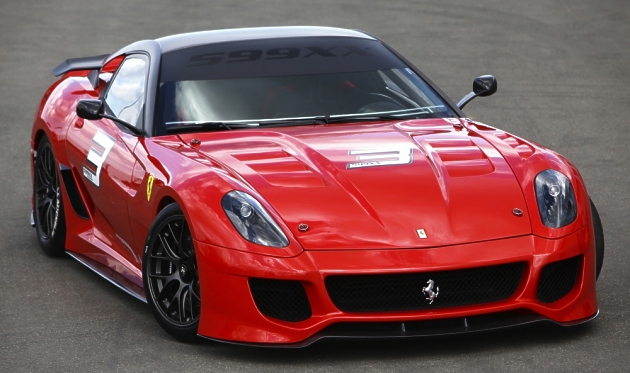
Ferrari 599XX Prototype |
While based on the 599 GTB Fiorano with
the same transaxle layout and engine type, this prototype is an
extreme track car. Ferrari's engineers have carried out
extensive work on the engine's combustion chambers and inlet and
exhaust tracts. These modifications, combined with the fact that
internal attrition has been reduced and the maximum revs have
been boosted to 9,000 rpm, helped achieve the target power
output of 700 hp at 9,000 rpm. Particular attention was also
paid to cutting the weight of the engine unit components.
This was achieved both by optimising
forms - as in the new crankshaft - and adopting exclusive
materials, as in the carbon-fibre used for the intake plenums. A
new gearbox shift strategy cuts overall gearchange times to 60
ms. |
|
|
|
The 599XX is characterised by an
innovative electronic concept called the "High Performance
Dynamic Concept" which has been designed to get the maximum
performance from the car by managing the combination of the
car's mechanical limits with the potential of its electronic
controls.
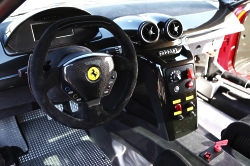
The mechanical and electronic systems
work together to get the maximum performance from the car under
extreme high performance driving, for consistent lap times.
|
The sporty handling has been improved thanks to
the adoption of second generation SCM suspension system. Track usage is
also made easier thanks to the new "virtual car engineer", a screen in
the car that provides a real-time indication of the vehicle's
efficiency.
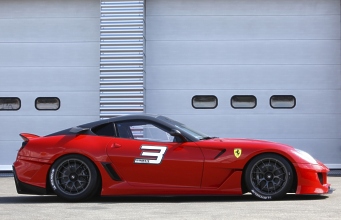

|
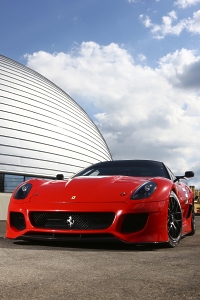 |
The 599XX's aerodynamics were honed in
numerous wind tunnel test sessions with the result that the car
now boasts 280 kg of downforce at 200 km/h (630 kg at 300 km/h).
The front underside of the body is completely faired-in and the
vents that channel hot air from the engine bay have been moved
to the bonnet.
The "ActiflowT" system increases
downforce and/or cuts drag depending on the car's trim cornering
conditions, courtesy of the use of a porous material in the
diffuser and two fans in the boot which channel the air flow
from under the car out through two grilles next to the
tail-lights.
Winglets have been added to the rear
buttresses to increase downforce. while synthetic jets have also
been incorporated into the rear of the car to control and smooth
the air flow and to reduce drag.
Ferrari's engineers have also used
F1-derived "doughnuts" which partly cover the brake discs and
wheel rim. These have the dual function of improving both
aerodynamics and brake cooling. |
In terms of the bodywork, composites and
carbon-fibre have been widely used and the engineers drew on their
experience in working with aluminium to reach the weight target. The
development of increasingly high-performance materials has also
benefited the carbon-ceramic material braking system. The brake pads are
now made from carbon-fibre which means that the calipers are smaller
whilst guaranteeing the same efficiency. The new racing carbon ceramic
braking system also delivers shorter braking distances and is generally
more efficient due to the weight saving.

The 599XX comes with slick tyres (29/67 R19
Front and 31/71 R19 Rear) specifically developed to maximise stability
in cornering and increase lateral acceleration. They are fitted to 19 x
11J wheel rims at the front and 19 x 12J at the rear.


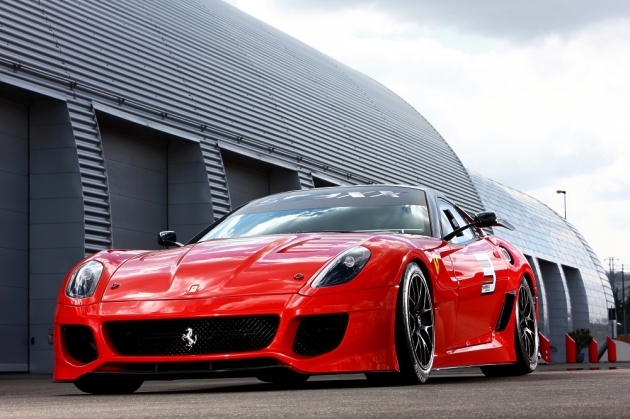
(August 05, 09)
|

